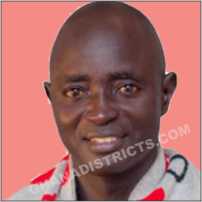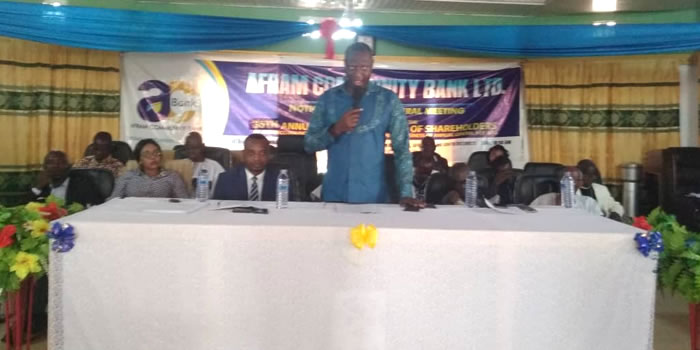

Introduction
This chapter describes the economic activities of residents in the Kwahu Afram Plains South District based on the 2010 Population and Housing Census. The characteristics which will be discussed under this chapter include Economic activity status, Occupation, Industry, Employment status and Employment sector. The resilience of the economic sector of a country is a demonstration of the correct combine effect of the requisite human resources with available natural resources.
Factors contributing to employment opportunities in the district are partly influenced by the structure of the population, proportion of the economically active population and the labour market. A careful study of population indictors and the labour market help to identify the structure of the economy and employment opportunities available.
Economic Activity Status
Activity status refers to economic or non-economic activity of respondents during the 7 days preceding census night.
Table 4.1 shows the population 15 years and older by activity status and sex. On whole, 66,528 of the population 15 years and older are either economically active or not. About eight six percent (85.3%) of the total population are economically active. Out of this, (97.9%) are employed compared to (2.1%) are unemployed. The total population who are economically not active are (14.1%). Though unemployment is generally low throughout the district for both sexes, females (2.5%) are more unemployed than males (1.8%).Females in Ghana generally perform household chores even from early childhood. Consequently, some become housewives who may not engage in any economic activity probably because they may not be willing or available to do so. This probably explains the high rate of unemployment among females in the district.
It is also apparent from Table 4.1 that females (17.2%) are more economically not active than the males (12.7%) who are economically not active. Generally the males have dominated the females in all aspects of economic activity in the district, since majority of the inhabitants are engaged in the agricultural sector.
In the District, majority of employed population fall within the age group of 45-49 years (96.4%) whiles majority of the unemployed are in the age group of 20-24 years (3.2%). Majority (45%) of the economically not active population fall within the age groups of 15-19 years and 60+ years.
Out of the male population aged 15 years and older, employed males constitute 85.8 percent whiles the unemployed males represent just 1-6 percent with 12.6 percent being economically not active. Within the age groups for males persons aged 45-49 years employs 97.4 percent and least in this category falls within 15-19 years which is expected because these are supposed to be in school or learning some trade. Males in the other age groups employ more than 80 percent in the district.
With respect to females those employed are 80.7 percent, unemployed 2.1 percent and persons being economically not active represent 17.3 percent in the district. Among the various age groupings, persons 45-49 employed account for 95.0 percent as against 15-19 years 49.1 percent being the least for the district with respect to those employed.
For females, unemployed persons in the age group 20-24 years are 3.6 percent. Persons between ages 45-49 years has 4.1 percent as economically not active with the greatest occurring for persons aged 15-19 with 48.7 percent. On the other hand, unemployed males within the male population 15 years and older constitute 2.3 percent whiles the female population has 3.4 percent unemployed females.
Occupation
The 2010 PHC defines occupation as economic activity that individuals engage in to earn a living in cash or in kind. Table 4.3 shows the analysis of the employed population 15 years and older by occupation and sex. It indicates that 77.2 percent of the working population are the skilled agricultural forestry workers and fishery workers occupation. The group forms the largest occupation in the district. 36
However there are variations in the occupational pattern in the district with high percentage of male population (86.3%) is engaged in agricultural forestry and fisheries as compared to females (65.6%). On the other hand, more females (17.5%) are engaged in craft and related trade work than their male counterparts (4.2%). Apart from the two dominant occupational sectors mentioned from table 4.3, the remaining occupational sectors employ less than two percent of the population.
A total of 55,553 of the employed population 15 years and older are in the industry sector, with the male constituting 31,133 (56.1%) compared to females 24,400 (43.9%). Agriculture forestry and fishing constitute the largest industry employing almost eight out of ten persons (76.3%) of the workforce aged 15 years and above in the district. The availability and access to vast arable land could account for the high percentage of the population engaged in agriculture sector. Another major industry is the manufacturing sector which employs (8.1%) of the workforce. About eighty-six percent (85.2%) of the employed males are into agriculture forestry and fishing compared to female percentage of sixty-five. There are more females in the wholesale and retail; repair of motor vehicles and motor cycles (11.1%), than their male counterparts of four percent.
The employment status of the population is an indication of the engagement of the population in economic activity, whether employed or unemployed. These indices are important for planning and monitoring of economic policies that seek to address unemployment situation within a population.The 2010 PHC outlines employment statuses as follows: Employee, Self-employed without employee(s), Self-employed with employee(s), Casual worker, Contributing family worker, Apprentice, Domestic employee (House help). 38
The results of the analysis of the census data in the Kwahu Afram Plains South district shows that (68.6%) are self-employed without employees, which is the largest employment status in the district. Contributing family workers also employed (18.6%) of the employed population. On the whole, males who are self-employed without employees (69.8%) are slightly more than females (67.1%). There are more female contributory family workers (23.2%) than males (14.9%).
The results from Table 4.6 show that the private informal sector (95.9%) is the largest employer in the district. The proportion of employed females working in the private informal sector is (97.1%) whiles that of males is ninety five percent. Thus, irrespective of sex, the private informal sector is the dominant employer of the workforce. This could account for the relatively low levels of educational and professional training among the employed population, since these sectors do not require high levels of formal education. Among the workforce (1.9%) is employed in the private formal sector. The public sector, comprising Government Ministries, Departments and Agencies, employed two percent of the total employed population in the district. The proportion of males and females employed in the public sector are (2.6%) and (1.2%) respectively.
Date Created : 11/26/2017 3:41:24 AM










 facebook
facebook
 twitter
twitter
 Youtube
Youtube
 +233 593 831 280
+233 593 831 280 0800 430 430
0800 430 430 GPS: GE-231-4383
GPS: GE-231-4383 info@ghanadistricts.com
info@ghanadistricts.com Box GP1044, Accra, Ghana
Box GP1044, Accra, Ghana